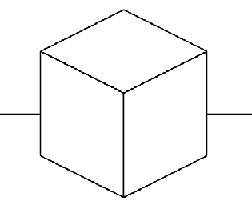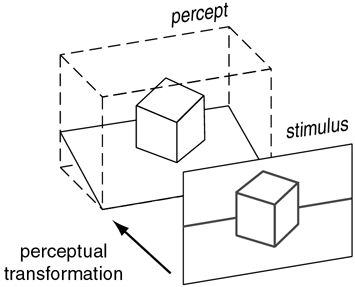stimulus


| Previous | Return to Steve Lehar | Next |
The properties of the world of experience are so profoundly at odds with contemporary concepts of neurocomputation that it is difficult to know where to begin modeling these phenomena with a neural model.
I propose therefore a perceptual modeling approach, i.e. to model the observed properties of visual experience directly, rather than by way of the neural mechanism by which that experience is subserved.
A two-dimensional visual stimulus promotes a three-dimensional perceptual experience. The informational transformation of perception therefore can be described as an expansion from a two-dimensional image to a three-dimensional data structure expressed as solid volumes, bounded by colored surfaces, embedded in a spatial void.
stimulus
|

|
The perceptual transformation therefore apparently solves what is known as the inverse optics problem, i.e. to reverse the perspective projection of the lens of the eye. This problem however is underconstrained, because there are an infinite number of arrangements in the visual field that all project to the same retinal image. How does the visual system address this underconstrained problem?
Gestalt theory suggests an emergent solution, as suggested by the Gestalt soap bubble analogy. I propose therefore an emergent soap-bubble mechanism to account for the perceptual transformation in perceptual modeling terms.
A prominent feature of the perceptual experience of a line-drawing stimulus as shown above is that of continuous surfaces sloping in depth, extending through regions which are devoid of features in the stimulus. This suggests a spatial interpolation function in perception, somewhat like a milky soap bubble clinging to a wire frame.
| Previous | Return to Steve Lehar | Next |